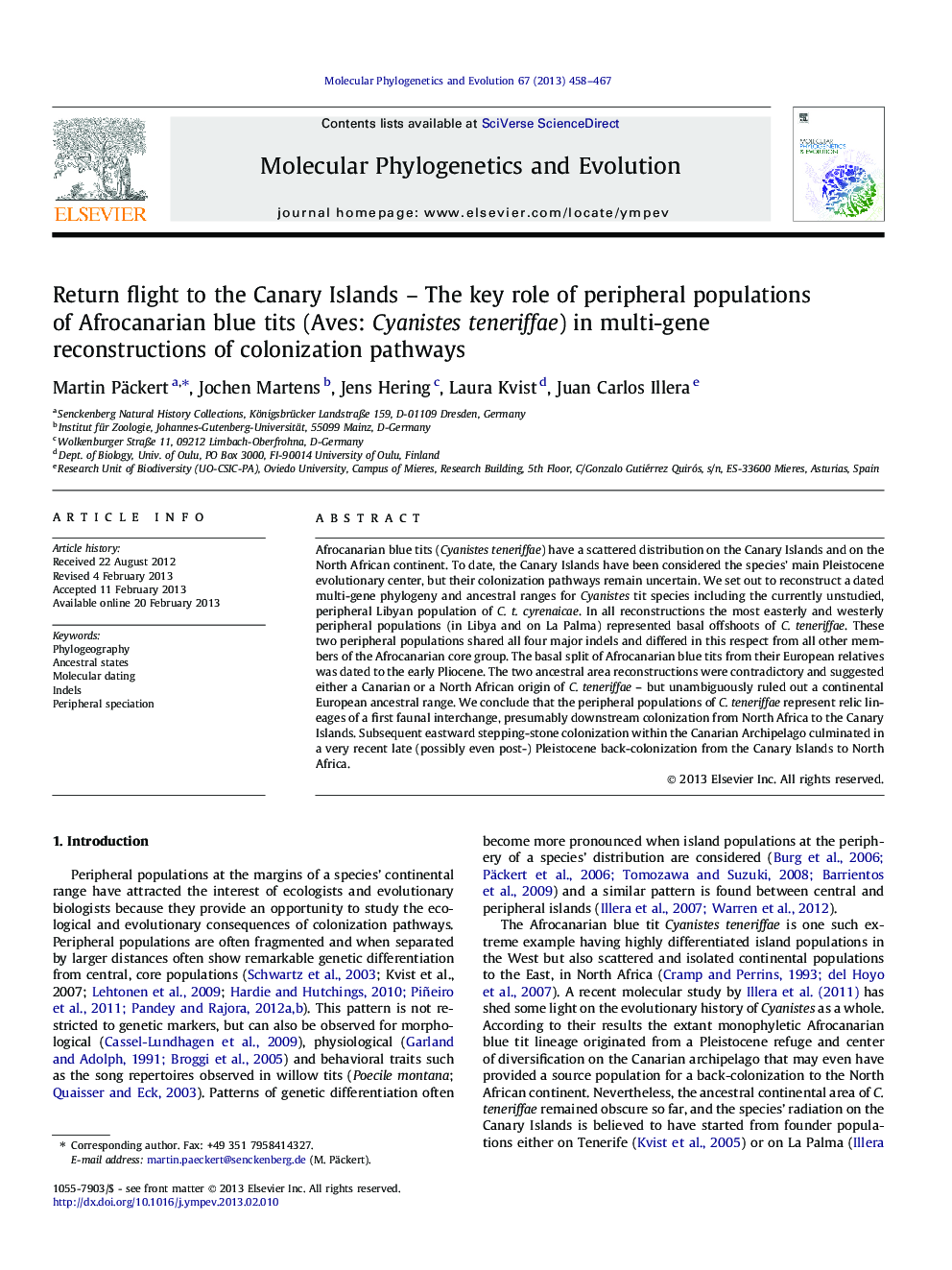| Article ID | Journal | Published Year | Pages | File Type |
|---|---|---|---|---|
| 5919954 | Molecular Phylogenetics and Evolution | 2013 | 10 Pages |
Afrocanarian blue tits (Cyanistes teneriffae) have a scattered distribution on the Canary Islands and on the North African continent. To date, the Canary Islands have been considered the species’ main Pleistocene evolutionary center, but their colonization pathways remain uncertain. We set out to reconstruct a dated multi-gene phylogeny and ancestral ranges for Cyanistes tit species including the currently unstudied, peripheral Libyan population of C. t. cyrenaicae. In all reconstructions the most easterly and westerly peripheral populations (in Libya and on La Palma) represented basal offshoots of C. teneriffae. These two peripheral populations shared all four major indels and differed in this respect from all other members of the Afrocanarian core group. The basal split of Afrocanarian blue tits from their European relatives was dated to the early Pliocene. The two ancestral area reconstructions were contradictory and suggested either a Canarian or a North African origin of C. teneriffae – but unambiguously ruled out a continental European ancestral range. We conclude that the peripheral populations of C. teneriffae represent relic lineages of a first faunal interchange, presumably downstream colonization from North Africa to the Canary Islands. Subsequent eastward stepping-stone colonization within the Canarian Archipelago culminated in a very recent late (possibly even post-) Pleistocene back-colonization from the Canary Islands to North Africa.
Graphical abstractFigure optionsDownload full-size imageDownload as PowerPoint slideHighlights► Peripheral Cyanistes teneriffae populations (Libya, La Palma) represent relics from Pliocene Afrocanarian faunal interchange. ► Eastern and western North African populations are distant relatives only differing by 4.6% mtDNA divergence. ► Colonization pathways within the Canarian Archipelago correspond to an eastward stepping-stone model.
